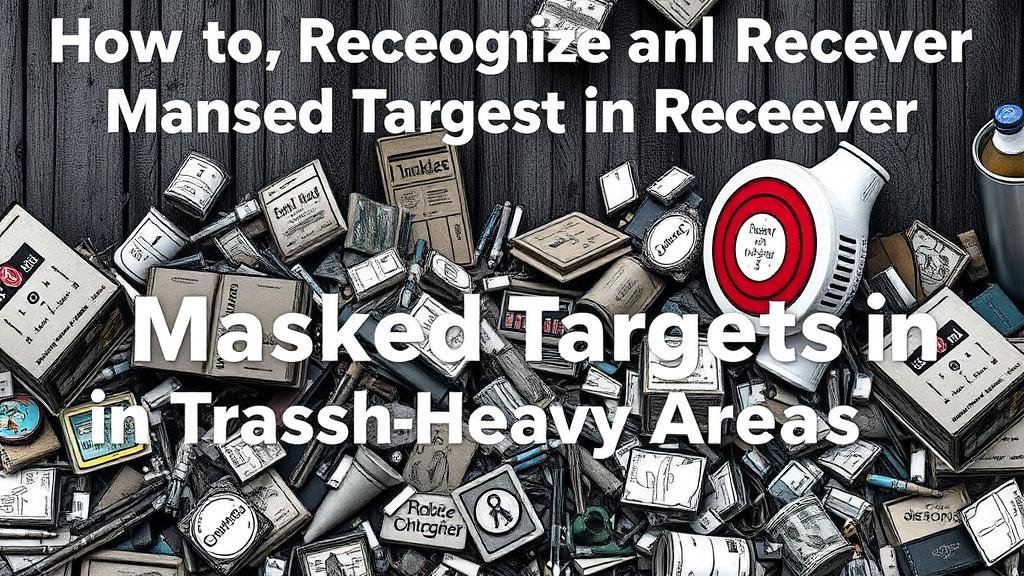How to Recognize and Recover Masked Targets in Trash-Heavy Areas
How to Recognize and Recover Masked Targets in Trash-Heavy Areas
Trash-heavy environments, whether they be urban areas, landfills, or disaster zones, present significant challenges for recovery operations. The presence of debris and refuse can mask valuable targets, making their detection and extraction more complex. This article outlines methods for recognizing and recovering these masked targets, providing practical strategies and real-world applications.
Understanding Masked Targets
A masked target is an item of interest that is obscured by surrounding materials. This could involve hidden devices in a search-and-rescue scenario, valuable artifacts in archaeological digs, or hazardous materials needing containment in industrial settings. Recognizing these targets is crucial for effective recovery operations. According to the Federal Emergency Management Agency (FEMA), efficient recovery efforts increase survival rates by up to 30% in disaster scenarios when targets are recovered rapidly.
Challenges Presented by Trash-Heavy Areas
Trash-heavy areas complicate target recovery in several ways:
- Visual Obstruction: Debris can conceal objects, making them difficult to identify without close inspection.
- Signal Interference: In the case of electronic targets, surrounding materials may disrupt communication signals.
- Hazardous Conditions: The presence of hazardous waste can pose safety risks to recovery teams, necessitating protective measures.
Strategies for Recognizing Masked Targets
1. Systematic Search Techniques
A methodical approach to searching trash-heavy areas increases the likelihood of successfully detecting masked targets. Techniques include:
- Grid Searching: Divide the area into a grid and systematically search each section to ensure thorough coverage.
- Layered Assessment: Assess layers of debris individually; remove top layers to reveal potential buried targets.
For example, during the September 11th recovery effort, search teams utilized grid-search methods to locate and identify personal effects and electronic devices buried beneath tons of debris.
2. Use of Technology
Integrating technological solutions aids in recognizing masked targets. Some valuable tools include:
- Ground Penetrating Radar (GPR): This technique allows for imaging sub-surface structures and materials, effectively identifying targets hidden beneath debris.
- Metal Detectors: Handheld or ground-based metal detectors can locate buried metallic objects, which is particularly useful in rescue operations.
A notable example includes the use of GPR technology during archaeological excavations in landfill sites, successfully locating artifacts once thought lost to time.
3. Engaging Local Knowledge and Resources
Local knowledge can be invaluable when navigating trash-heavy areas. Engaging community members or local experts in recovery efforts often yields a deeper understanding of the area, enhancing the search. For example, local waste management personnel may provide insights into recent disposal patterns, potentially highlighting areas where valuable items might be located.
Recovery Techniques for Masked Targets
1. Safe Removal Processes
Recovering targets from trash-heavy areas necessitates careful planning and execution to ensure safety and preservation of the items. Key processes involve:
- Manual Extraction: Use proper tools to gently excavate and recover items, minimizing damage during the process.
- Documenting Recovery: Maintain thorough documentation of the site and recovery procedures to aid in understanding context and preserving evidence.
2. Training and Preparedness
Recovery teams must be trained not only in operational techniques but also in safety protocols. Regular drills and simulations can prepare teams for the complexities of working in trash-heavy areas. Programs such as the Urban Search and Rescue Training offered by FEMA provide essential skills and knowledge for effective recovery.
3. Psychological and Emotional Support
Working in trash-heavy environments can be physically and emotionally taxing. Providing psychological support to recovery teams can enhance performance and team cohesion. Techniques such as debriefing sessions and counseling services can aid in addressing stress and trauma from these high-stakes operations.
Conclusion
Recognizing and recovering masked targets in trash-heavy areas requires a systematic approach supported by technology and local knowledge. By deploying effective strategies, employing advanced tools, and focusing on team training, recovery operations can enhance their efficacy. These methods can be critical not only in emergency situations but across various fields requiring item retrieval. Ultimately, proactive planning and execution will lead to successful outcomes in challenging environments.
Actionable Takeaways
- Use systematic search techniques in all recovery operations.
- Use technological tools like GPR and metal detectors where applicable.
- Engage with local experts to gain insights into the areas trash and disposal history.
- Prioritize team safety and mental health through training and support services.


